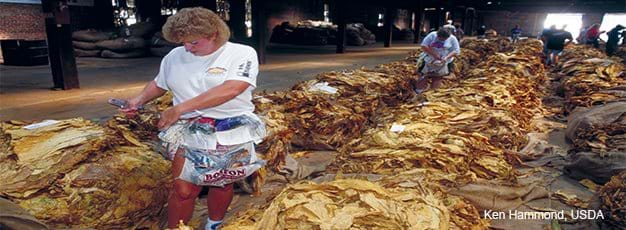Producers Rely on Contracts To Manage Increased Price Risks

U.S. agricultural production continues to shift away from cash markets and toward greater use of contracts. According to a new ERS study, agricultural contracts covered 41 percent of the value of agricultural production in 2005, up from 36 percent in 2001 and 28 percent in 1991.
The contracts, which are preharvest agreements for a particular commodity, specify an outlet, delivery terms, and a method of compensation for the producer. Some go much further, covering all elements of production in addition to marketing. They can help manage price risks, smooth production at processing plants, encourage production of specific product varieties or qualities, and elicit the investments necessary to realize economies of scale. But contracts can also create new risks for producers, and they have the potential to extend a buyer’s market power to drive commodity prices below competitive levels.
The steady expansion of contracting, when measured across all of agriculture, masks some sharp changes in specific commodities that often occur in response to shifts in government policy, information flows, or buyer organization. Greatly expanded use of marketing contracts, for example, recently followed significant changes in government peanut andtobacco programs.
Each program featured the use of marketing quotas to control domestic supplies, which, in turn, created stable and relatively high spot-market prices. Contracts were an important element of peanut and tobacco production before the policy change. They covered a quarter to nearly a half of peanut production until 2002 and half of tobacco production until 2004, when quotas were eliminated. Under the quota system, contracts provided assured outlets, expanded quality controls for peanuts, and stronger incentives to produce tobacco in specific quality categories.
Elimination of marketing quotas loosened supply controls, and cash markets, as a result, exhibited greater price risks. Use of contracts jumped sharply because they provided a way to manage the increased price risks. Contracts covered 80 percent of peanut production by 2004, and two-thirds of producers said that eliminating marketing quotas had led to a greater reliance on contracts. Use of contracts likewise jumped after tobacco marketing quotas were eliminated; contracts covered 78 percent of tobacco production in 2005.
Indepth, more accurate market price reporting may allow producers to manage price risks better, and may therefore help to preserve cash markets. But contracts can provide another avenue for risk management, one on which market participants have increasingly relied.
Agricultural Contracting Update, 2005, by James M. MacDonald and Penni Korb, USDA, Economic Research Service, April 2008


